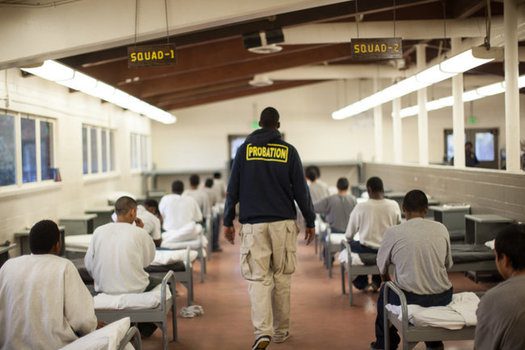
Purpose, Necessity, and Impact
Reflections from the Transforming Juvenile Probation Certificate Program
Over the past two decades, juvenile justice systems in the United States have seen significant advancements. Decreases in juvenile justice arrests and incarceration rates, as well as an increasing number of agencies implementing evidence-based strategies, have indicated noted progress. Despite these gains, few jurisdictions have fundamentally questioned the purpose and goals of probation or considered reorienting the role of probation officers away from surveillance and sanctions and toward promoting positive youth behavior change.
This narrative changed last month when seven jurisdictions from across the country participated in the Transforming Juvenile Probation Certificate Program, a weeklong intensive training. The training was hosted in partnership with Georgetown’s Center for Juvenile Justice Reform (CJJR) and The Council of State Governments (CSG) Justice Center and was supported by the Annie E. Casey Foundation (AECF).
The program brought together cross-disciplinary teams from Caddo Parish, Louisiana; Charlottesville, Virginia; Marion County, Indiana; Multnomah County, Oregon; the state of New Hampshire; San Diego County, California; and Stark County, Ohio.
The training encouraged teams to fundamentally rethink the policies, procedures, practices, and partnerships that make up their juvenile probation systems. The teams received information from nationally renowned juvenile justice researchers and practitioners and covered a variety of topics, including probation conditions, diversion practices, fairness and equity, and the role of probation officers.
Throughout the week, teams spent time together developing strategic plans detailing the specific changes they plan to enact as part of the program’s capstone project. At the end of the training, participants left with a wealth of knowledge that will be shared with their internal and external partners to better improve public safety and youth outcomes; employ resources more efficiently; and reduce the disparate treatment of youth of color.
Some of the certificate program’s participants had this to say about their experience of the week-long training.
For the next year, jurisdictions will also receive distance and on-site technical assistance to help implement their plans and projects in their communities.
 New Hampshire Continues Justice Reinvestment Effort to Improve Conditions for People Who Are High Utilizers of Criminal Justice and Behavioral Health Systems
Read More
New Hampshire Continues Justice Reinvestment Effort to Improve Conditions for People Who Are High Utilizers of Criminal Justice and Behavioral Health Systems
Read More
 New Hampshire Commission Reviews Final Policy Recommendations to Reduce Reliance on Incarceration as Part of Justice Reinvestment Initiative
Read More
New Hampshire Commission Reviews Final Policy Recommendations to Reduce Reliance on Incarceration as Part of Justice Reinvestment Initiative
Read More
 Three Things to Know About New Jersey’s Groundbreaking Community Response Legislation
Three Things to Know About New Jersey’s Groundbreaking Community Response Legislation
In response to growing calls for police reform in New Jersey, particularly following the shootings of Najee Seabrooks and Andrew Washington in March and August 2023, a coalition of law enforcement officials, mental health professionals, and community advocates partnered to explore public safety response alternatives.
Read More












